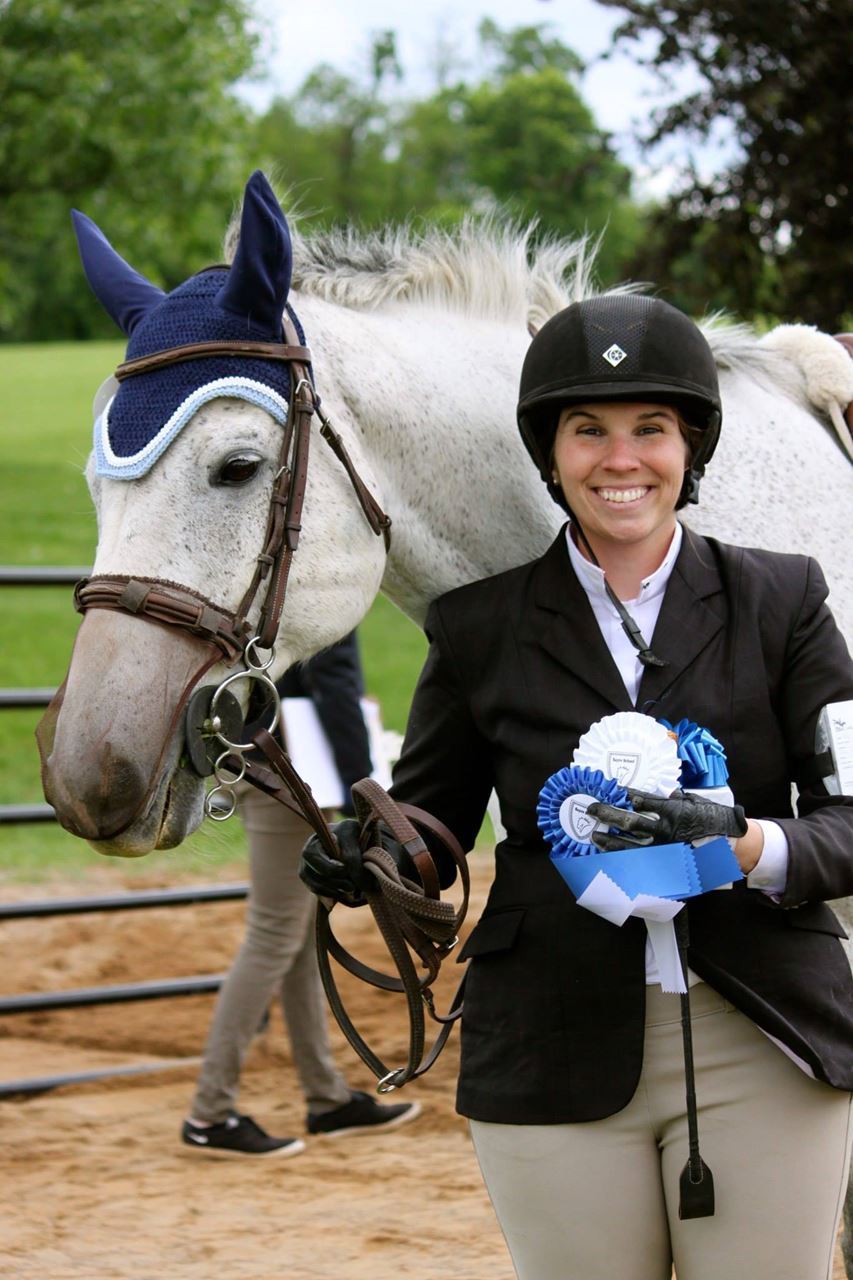By Kristen M Brennan, PhD, Alltech Inc.
Whether it is human or equine, nutrition can be confusing. Many horse owners never really think about nutrition past “my horse gets a scoop” and if their horse is fat or thin. But you do not have to have a PhD to understand the basics of nutrition. In this series, I aim to demystify equine nutrition for horse owners.
 Dr. Kristen Brennan and Marcus
Dr. Kristen Brennan and Marcus
The Equine Gastrointestinal Tract
Before we can cover how to understand nutrition to properly feed your horse, we need to review the digestive (gastrointestinal) tract anatomy of the horse. The digestive anatomy of horse dictates how we should feed them and why their ideal diets are so different from our own. Horses are true herbivores, meaning they consume plant fibers to meet their daily energy requirements. They are what are considered a hind gut fermenter, meaning they have the capability in their lower gastrointestinal tract to break down tough fibers found in plants to get the nutrients they need.
Digestion begins in the horse’s mouth. Horses chew, or masticate, and feed is mixed with saliva forming soft boluses. Saliva acts as a buffer for the acidic environment of the stomach and contains small amounts of enzymes that aid in the breakdown of feed. From the mouth, feed travels down the esophagus into the stomach. Because horses lack a two-way valve between the stomach and the esophagus, they have little reflux ability making their digestive tract a one-way street at this point. As horses had evolved to graze continuously eating small amounts throughout the day, the total volume of the stomach is small (about 10% of the total digestive tract) and feed only remains in it for a short period of time. While in the stomach, feed mixes with acid and pepsin, an enzyme that breaks down proteins into smaller pieces, to start the digestion process.
From the stomach, feed passes to the small intestine where most of the nutrients in the feed are digested and absorbed. Through the help of digestive enzymes, proteins are broken down into amino acids, fats are broken down into smaller lipid molecules, and sugars and starches are broken down to glucose. After breakdown occurs, these products (along with most minerals and vitamins) are absorbed through the intestinal wall into the blood stream to be used by the cells of the body.
The remaining digesta moves to the cecum. The cecum serves as a large fermentation chamber, allowing the horse to breakdown plant fibers with the help of bacteria and other microbes that populate the cecum. The microbes take plant fibers and synthesize nutrients such as vitamins and fatty acids which are then absorbed through the cecal wall. After the cecum, feed continues microbial digestion in the large colon. Here water, fatty acid products from the microbial digestion, and some minerals are absorbed. The remaining digesta, containing what can’t be digested or absorbed by the horse, passes to the small colon and rectum where water is absorbed and fecal matter is formed.
What is a Nutrient?
The next question you may ask is what is a nutrient? Simply defined, a nutrient is a component in food or feed that is necessary to support life. We can break nutrients down into two major classifications: macronutrients and micronutrients. Macronutrients are those that are required in higher levels in the diet and for horses, these include water, protein, and energy sources (carbohydrates and fats). Micronutrients are those that are required in small, or even trace, amounts such as vitamins and minerals.
In the next part of this series, we will cover what each of these nutrients are, why they are necessary and what feedstuffs are sources for each.
